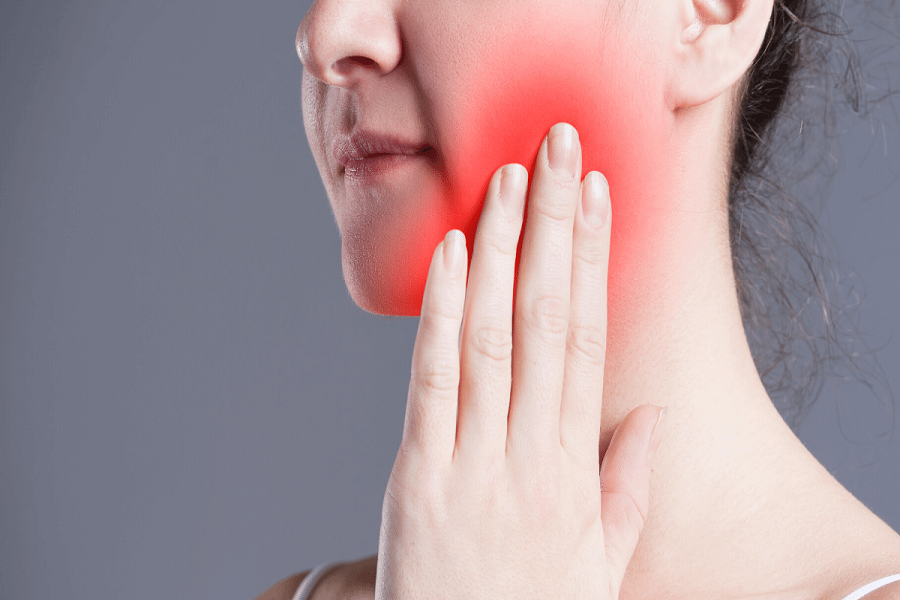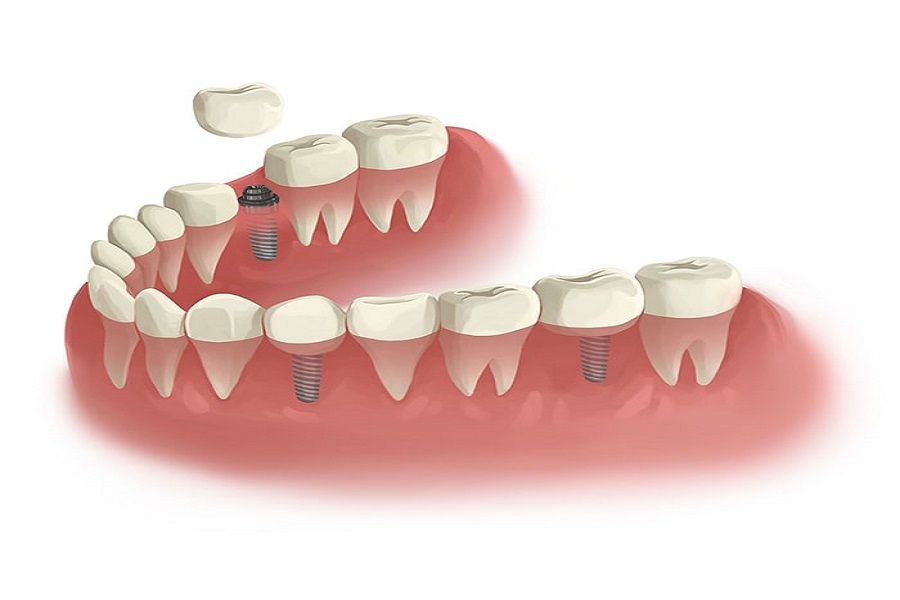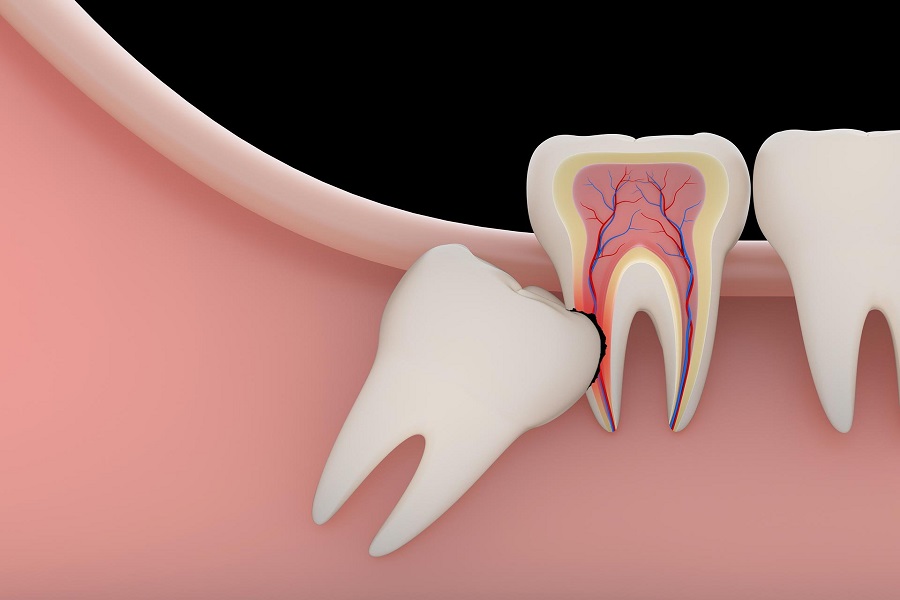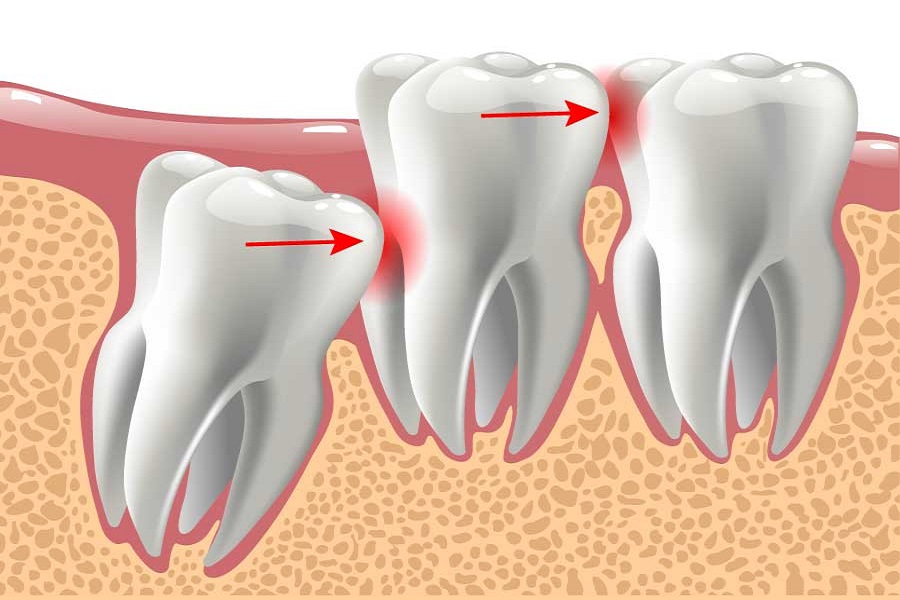1. What are wisdom teeth?
The eighth tooth from the middle, usually grows after the age of 20, some people are older, so it is also called smart tooth, referred to as wisdom tooth. Most people’s wisdom teeth do not grow well. This is because human beings have changed their living habits in the process of evolution. The food they get is getting softer and softer, and they no longer need strong chewing force, which gradually causes the mandible to degenerate and shorten. There is little change in the size and number, so that when the wisdom teeth grow, other teeth have already occupied the alveolar bone, and there is no place for the wisdom teeth, which hinders the eruption of the wisdom teeth, so crowding occurs, long, long, curved, or not long. Come out and wait for abnormal situations. Medically known as impacted wisdom teeth, also called impacted teeth.
2. Harm of wisdom teeth
Wisdom teeth that haven’t erupted. If wisdom teeth do not grow, the remaining tooth germs may degenerate and form oral tumors. When the space is insufficient, the tooth germ may absorb the root of the second molar in front of the tooth to reduce its strength and affect its function. Incomplete eruption of wisdom teeth. Wisdom teeth are not fully developed, and the posterior gingiva covers part of the crown to form a pericoronal pocket, which accumulates food and bacteria, which can cause frequent local soft tissue inflammation, unbearable pain, and even lead to restricted openings and difficulty in eating. Some people are reluctant to remove the inflammation after the inflammation is gone, the pain is gone, and they are unwilling to remove it when they can eat. Forward impacted wisdom teeth. Most wisdom teeth are placed on the front normal molars at an angle of about 45 degrees, and the two crowns form an included angle to impact food. Over time, the normal second molars will form caries until pulpitis and cause severe pain. Another consequence is that the forward-leaning wisdom teeth continue to exert pressure on the second molars, causing periodontitis and painful loosening, and eventually the second molars have to be extracted, or both teeth must be extracted, and the chewing function is severely impaired.
Although the eruption direction of some wisdom teeth is generally normal, the contact point with the second molar is abnormal, the gap is large, and food is often impacted, and it is difficult to brush the tooth gap when brushing, and it is very easy to cause the second molar to decay and shorten. its service life. Wisdom tooth pericoronitis occurs. The surface of the wisdom tooth is covered with a gingival flap, so that a gap is formed between the tooth crown and medically called a blind pocket. The food scraps that people eat are most likely to be hidden in it, and the humidity and humidity of the oral cavity are suitable, which provides a good growth and reproduction environment for bacteria. The food residue in the blind bag is not easy to remove even if you brush your teeth and rinse your mouth. Under normal circumstances, the harm caused by bacteria is not obvious, but when a cold, fatigue, and resistance are reduced, it will make waves and take advantage of the weakness, which leads to pericoronitis of wisdom teeth. This disease cannot be underestimated. It is ferocious, with obvious swelling and pain in the gums, severe trismus, difficulty in eating and swallowing, and systemic symptoms such as fever, headache, general discomfort, constipation, and increased white blood cells. If the treatment is not thorough, it will become chronic inflammation. When pericoronitis occurs repeatedly, the pus in the blind bag enters the digestive tract from the oral cavity, which can form a “focal point” of the human body and endanger health for a long time. Wisdom tooth pericoronitis can also cause facial soft tissue infection and spread to the head and face with adverse consequences.
3. What kind of wisdom teeth need to be removed?
Wisdom teeth not only have no chewing function, but also have a series of serious or potential hazards. They are a lesion, and early extraction is the best treatment plan.
Wisdom teeth are in abnormal position and form gaps with adjacent teeth; Wisdom teeth are in normal position, but the crowns of wisdom teeth are covered with bone tissue or gingival flaps, and the pericoronal soft tissue is often inflamed, swollen, and painful; Wisdom teeth are decayed, or occur Pulpitis, and inconvenient for endodontic treatment; for orthodontic needs, such as preventing the forward movement of the posterior teeth and preventing the crowding of the anterior teeth from aggravating. Wisdom teeth can be considered for extraction. However, when removing wisdom teeth, we must pay attention to the following points: First, pay attention to the disinfection conditions, and do not go to places with incomplete disinfection to avoid cross-infection. Secondly, when the oral cavity is inflamed, do not pull the teeth when the body’s resistance decreases for other reasons. At this time, the recovery of the tooth extraction wound is slower, and infection is prone to occur. Pay attention to rest after tooth extraction, and take medicine as directed by your doctor. Some people think that as long as the tooth does not hurt, there is no need for treatment or extraction. This view is incorrect. If it hurts, it means that damage has been done to normal teeth and even the body. It may cause irreversible damage in the long run. At this time, it may be too late to pull it out. Although many people are aware of the dangers of wisdom teeth and the reason why they must be removed, they are too late to remove them for fear of pain. In fact, only local anesthesia is needed for tooth extraction, and now the effect of anesthesia is very good, and tooth extraction is almost painless.
4. What kind of wisdom teeth can not be extracted?
Not all wisdom teeth must be removed. If the position of the wisdom teeth is relatively correct, there is no history of inflammation and pain in the pericoronal soft tissue of the wisdom teeth, and there is no caries in the wisdom teeth, the blind pocket can be eliminated by excision of the gingival flap. Pay attention to oral hygiene.






























